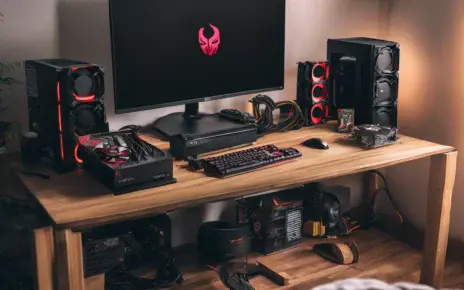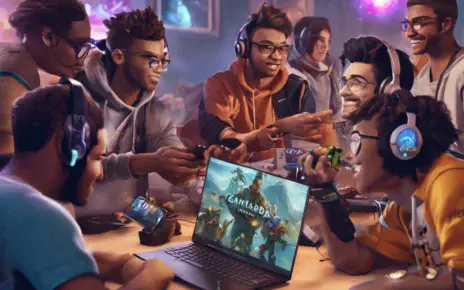Twitch has exploded in popularity over the past few years, becoming the go-to platform for gamers who want to share their experiences in real-time. The community is vibrant, supportive, and ever-growing, making it a fantastic place to connect with fellow gaming enthusiasts.
Streaming on Twitch isn’t just for pro gamers or tech gurus. Anyone with a passion for gaming and a willingness to learn can get started. The platform offers opportunities not just for showcasing skills but also for interacting with viewers, sharing tips, and even earning income.
Good news! Streaming on Twitch is free. You don’t need to pay a subscription fee to start your channel or broadcast your gameplay. However, investing in some quality gear can make a difference. A decent microphone, a reliable webcam, and a stable internet connection can go a long way in boosting the quality of your streams.
Now, about the legal side of things. Yes, it’s legal to stream most games on Twitch, but there are some exceptions. Always check the game’s licensing agreements and Twitch’s community guidelines before going live. Some games are off-limits due to copyright issues, so it’s important to do a quick check before you hit that ‘Start Streaming’ button.
Speaking of off-limits, Twitch does have a list of games you can’t stream, mostly due to explicit content or copyright restrictions. Make sure to review this list on Twitch’s website to avoid any potential issues. Games like “Manhunt 2,” “Fahrenheit: Indigo Prophecy,” and others have made this list.
Setting Up Your Twitch Account for Streaming
Alright, first thing’s first: you need a Twitch account. Signing up is straightforward. Head over to Twitch’s website, click on ‘Sign Up,’ and follow the prompts. Once you’ve got an account, spend some time customizing your profile. A catchy username, a bio that reflects your personality, and a cool profile picture can help you stand out from the crowd.
Once your account is set, you’ll need some gear to get started. A basic streaming setup includes a computer or console, a microphone, a webcam, and a stable internet connection. Many new streamers wonder, ‘What do I need to start streaming on Twitch?’ Start with the essentials, then upgrade your equipment as you find your footing and maybe even start earning some revenue.
Now, let’s talk money. Do streamers pay tax? Yes, they do. If you make money on Twitch, you’re considered self-employed, and that income is taxable. Keep track of your earnings and consult with a tax professional to ensure you’re meeting all your obligations. It’s better to stay on top of this from the get-go rather than dealing with potential surprises during tax season.
Security is another crucial factor. Enable two-factor authentication (2FA) on your Twitch account to protect it from unauthorized access. This adds an extra layer of security, requiring a second form of verification in addition to your password. Also, be mindful of what you share during streams to avoid giving away personal information.
In summary, setting up your Twitch account is more than just clicking a few buttons. It’s about laying a solid foundation for your streaming journey. With the right gear, attention to security, and a little bit of planning, you’ll be on your way to building a successful Twitch channel.
Adding Gameplay to Your Twitch Stream
Getting your gameplay onto Twitch is the heart of streaming. First, you’ll need to decide on software. OBS (Open Broadcaster Software), Streamlabs, and Twitch Studio are popular options. Each offers unique features, so pick the one that feels right for you.
Let’s start with how to get your game on Twitch. Once you’ve installed your chosen software, it’s time to set it up. Most of these programs have intuitive interfaces designed to make the process as smooth as possible. For instance, OBS and Streamlabs require you to create ‘scenes’ and ‘sources’. A scene might include your game capture, webcam, and overlays, while sources are the individual elements within that scene.
Twitch Studio, specifically designed for Twitch, simplifies the process even further. Download and install Twitch Studio, and it will guide you through on-screen prompts to show your gameplay. It’s a great option for beginners. The software connects directly with your Twitch account, making the setup straightforward.
For console gamers wondering how to show your gameplay on Twitch PC, it’s important to note that streaming directly from a console like PlayStation or Xbox is possible, but you might get better results using a capture card. A capture card connects your console to your PC, allowing you to utilize more advanced streaming software and overlay elements.
Lastly, don’t forget about audio. Use a good quality microphone for clear and crisp sound. Many viewers enjoy streams as much for the commentary and interaction as for the gameplay itself. Engage with your audience by responding to comments and keeping the conversation flowing throughout your stream.
Going Live on Twitch: Streaming Techniques and Tips
Ready to broadcast? Starting your first live stream can be a bit nerve-wracking, but with a few tips, you’ll be up and running smoothly. Open your streaming software and ensure everything is set up correctly—your scenes, sources, microphone, and webcam.
How do I stream my screen on Twitch? It’s simpler than you might think. In your streaming software, add a source and choose ‘Display Capture’ or ‘Game Capture’ for screen recording. ‘Game Capture’ is usually the better option since it focuses on the game window and reduces lag. Once everything looks good, hit that ‘Start Streaming’ button in your software. Your stream should now be live on Twitch for everyone to enjoy.
Interaction with your audience is a big part of what makes Twitch special. Keep an eye on the chat and respond to comments. Engaging with viewers can turn casual watchers into loyal followers. Use chatbots like Nightbot or StreamElements to manage your chat and keep it friendly and fun.
Technical hiccups can happen, but don’t stress. Common issues include lag, audio problems, or video not displaying properly. Have a troubleshooting checklist ready. Dropped frames? Lower your bitrate. Audio out of sync? Check your mic settings. Video issues? Make sure your game capture source is properly configured.
Finally, keep your stream interesting. Vary your content, introduce new games, and interact with your audience in creative ways. Running regular schedules can help, too. Announce your streaming times on social media to let people know when to tune in. Consistency can lead to a steady increase in viewers over time.
Monetizing Your Twitch Stream and Growing Your Channel
Turning your Twitch passion into a potential income stream is entirely possible. How much do beginner Twitch streamers make? It varies, but many start with small earnings and grow over time. Once you reach the Twitch Affiliate or Partner status, you can monetize through ads, subscriptions, and donations. Many streamers also earn through sponsorships and affiliate marketing.
Understanding the Twitch Affiliate Program is key. To qualify, you need at least 50 followers, 500 total minutes of broadcast in the last 30 days, and an average of 3 concurrent viewers. Reaching Partner status is tougher but offers more revenue opportunities, including more ad revenue and higher subscription tiers.
So, who is the richest streamer on Twitch? Streamers like Ninja and Shroud have made millions, but remember, success on Twitch takes time and consistency. Always focus on creating engaging content and building a strong community. The money follows those who are dedicated and genuine.
Growing your channel involves more than just streaming. Use social media to promote your streams, engage with your audience off-stream, and collaborate with other streamers. Networking is a powerful tool—joining a streamer group or community can provide support and exposure.
Lastly, there are some legal and financial considerations. Streamers do pay taxes, so keep good records of your earnings and expenses. Consulting with a financial advisor can be beneficial as your channel grows. And remember, maintain a healthy work-life balance to ensure long-term success and enjoyment of your streaming journey.




